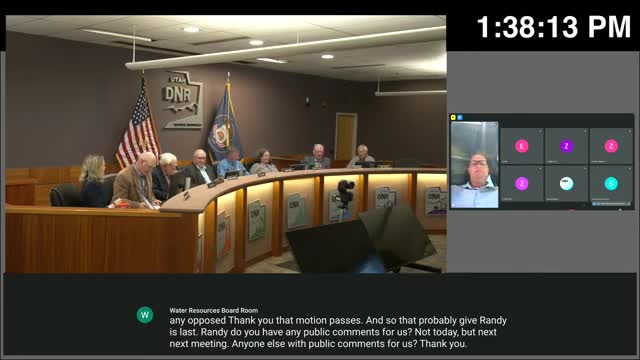Great Salt Lake faces critical water budget crisis
August 16, 2024 | Utah Office of Tourism, Utah Government Divisions, Utah Legislative Branch, Utah
This article was created by AI summarizing key points discussed. AI makes mistakes, so for full details and context, please refer to the video of the full meeting. Please report any errors so we can fix them. Report an error »

In a recent government meeting, hydrology expert Leila Amadi presented a comprehensive overview of the water budget for the Great Salt Lake basin, highlighting significant fluctuations in water levels and the ongoing challenges posed by climate change and human activity.
Amadi reported that the Great Salt Lake has shown improvement compared to its critical state in 2022, when it recorded the lowest water surface elevation and highest salinity levels. The lake's health is crucial, as it impacts local ecology, air quality, and surrounding industries. The presentation emphasized that the lake's water levels are influenced primarily by inflows from three major rivers—Bear River, Weber River, and Jordan River—as well as direct precipitation and groundwater flow.
However, the data indicates a troubling trend: since the 1980s, the lake has experienced a decline in water levels due to factors such as reduced runoff efficiency, rising temperatures, prolonged dry spells, and upstream water diversions. The average volumetric change from 1989 to 2022 shows a deficit of approximately 468,000 acre-feet, with evaporation alone accounting for an estimated 2.2 million acre-feet annually.
Amadi underscored the importance of a water budget model developed by the Division of Water Resources, which assesses various components of water balance, including evapotranspiration and consumptive use. This model, which divides the state into 152 sub-basins, aims to provide a clearer understanding of water distribution and usage across the region.
The meeting concluded with a call for continued monitoring and research to address the uncertainties surrounding groundwater contributions to the lake and to develop strategies for sustainable water management in the face of ongoing environmental challenges.
Amadi reported that the Great Salt Lake has shown improvement compared to its critical state in 2022, when it recorded the lowest water surface elevation and highest salinity levels. The lake's health is crucial, as it impacts local ecology, air quality, and surrounding industries. The presentation emphasized that the lake's water levels are influenced primarily by inflows from three major rivers—Bear River, Weber River, and Jordan River—as well as direct precipitation and groundwater flow.
However, the data indicates a troubling trend: since the 1980s, the lake has experienced a decline in water levels due to factors such as reduced runoff efficiency, rising temperatures, prolonged dry spells, and upstream water diversions. The average volumetric change from 1989 to 2022 shows a deficit of approximately 468,000 acre-feet, with evaporation alone accounting for an estimated 2.2 million acre-feet annually.
Amadi underscored the importance of a water budget model developed by the Division of Water Resources, which assesses various components of water balance, including evapotranspiration and consumptive use. This model, which divides the state into 152 sub-basins, aims to provide a clearer understanding of water distribution and usage across the region.
The meeting concluded with a call for continued monitoring and research to address the uncertainties surrounding groundwater contributions to the lake and to develop strategies for sustainable water management in the face of ongoing environmental challenges.
View full meeting
This article is based on a recent meeting—watch the full video and explore the complete transcript for deeper insights into the discussion.
View full meeting

